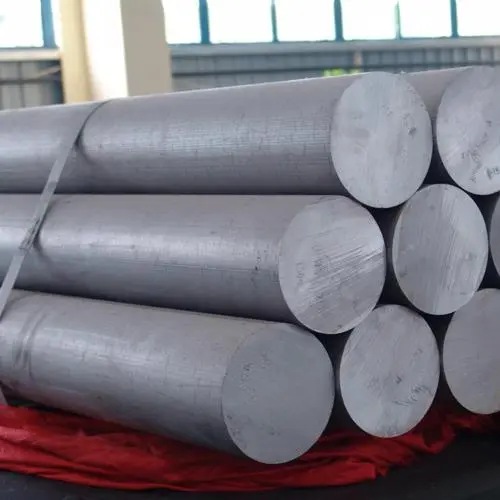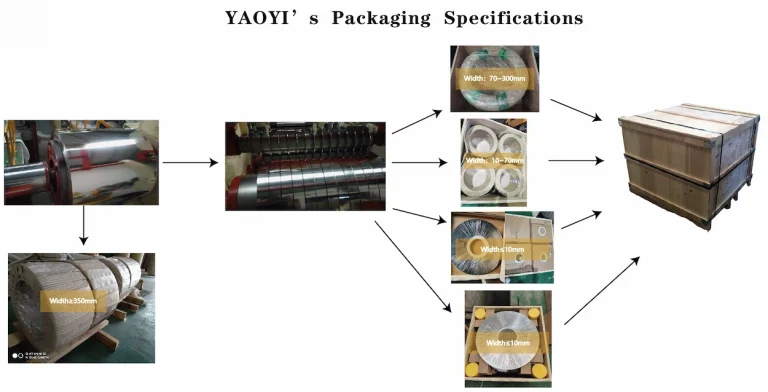Myriad 4140 Low Alloy Steel, this steel has good workability, small processing deformation, and good fatigue resistance. It is a medium-sized hardenable steel. After heat treatment, 4140 has good strength and good comprehensive mechanical properties, good manufacturability, and finished product. High rate. The use temperature is 427 degrees Celsius. 4140 strength, high hardenability, good toughness, small deformation during quenching, high creep strength and lasting strength at high temperature.
Used to manufacture forgings that require higher strength and larger quenched and tempered section than 35CrMo steel, such as large gears for locomotive traction, supercharger transmission gears, rear axles, connecting rods and spring clamps that are heavily loaded, and can also be used Drill pipe joints and fishing tools for oil deep wells below 2000m, and can be used for molds of bending machines, etc.


AISI stainless steel has been around for decades and as it continues to evolve, steel is still considered one of the most high-demand products in commercial industries and construction businesses.
It is also known for its excellent attributes with various steel grades to choose from. YAOYI provides high-quality AISI stainless steel along with the best services for your convenience
But which AISI stainless steel is right for you?
In this article, you will learn the characteristics of one of the most widely used steel, 4140 Low Alloy Steel. To better understand why this steel might be the right choice for you, we made this thorough article full of detailed information and answers to common questions about the 4140 Low Alloy Steel.
When it comes to steel, there are countless different types and grades available, each with its own unique properties and uses. One such steel grade is 4140 Low Alloy Steel, renowned for its exceptional strength, durability, and versatility. In this article, we will delve into the various aspects of 4140 Low Alloy Steel, including its chemical composition, mechanical properties, and popular applications.
Also known as AISI 4140, this steel grade belongs to the low alloy category, meaning it contains a small percentage of alloying elements that enhance its performance. What sets 4140 Low Alloy Steel apart is its combination of chromium and molybdenum, which contribute to its high strength and excellent hardenability.
Due to its impressive mechanical properties, 4140 Low Alloy Steel finds widespread use in industries such as automotive, aerospace, oil and gas, and machinery manufacturing. Let us now explore the chemical composition of this remarkable steel grade.
The chemical composition of 4140 Low Alloy Steel plays a crucial role in determining its physical and mechanical properties. Below is an overview of the key elements present in AISI 4140:
The significant amounts of chromium and carbon give 4140 Low Alloy Steel its remarkable strength and hardness. The addition of manganese and silicon provides improved hardenability and enhanced mechanical properties. It is worth noting that the balanced iron content forms the base of this alloy and imparts its overall structural integrity.
The mechanical properties of 4140 Low Alloy Steel make it highly desirable for a wide range of applications. The following are the key mechanical properties of AISI 4140:
The high tensile strength of 4140 Low Alloy Steel enables it to withstand significant stress and pressure without deforming or breaking. The yield strength represents the stress level at which the material permanently deforms, making it an essential parameter for design considerations. The elongation value indicates the steel’s ability to stretch without fracturing, conferring excellent formability.
It is important to note that the mechanical properties of 4140 Low Alloy Steel can be further enhanced through heat treatment processes such as oil-hardening. This aspect makes it a sought-after option for applications requiring superior hardness and strength.
Thanks to its exceptional properties, 4140 Low Alloy Steel finds diverse applications across several industries. Some common uses include:
These are just a few examples of how 4140 Low Alloy Steel contributes to various industries. Its versatility and reliability make it a top choice for manufacturers seeking high-performance materials.
When selecting a steel grade for a specific application, it is important to consider the alternatives available. Here is a comparison between 4140 Low Alloy Steel and other commonly used steel grades:
4140 Low Alloy Steel vs. 4130 Low Alloy Steel: Both AISI 4140 and 4130 low alloy steels offer similar mechanical properties and are often used interchangeably. However, the key difference lies in the carbon content, with 4130 containing less carbon, making it easier to weld.
4140 Low Alloy Steel vs. 4340 Low Alloy Steel: While both steels exhibit excellent strength and hardenability, 4340 low alloy steel offers higher toughness and is ideal for applications requiring impact resistance.
4140 Low Alloy Steel vs. Stainless Steel: Unlike stainless steel, which predominantly contains chromium and nickel, 4140 Low Alloy Steel possesses chromium and molybdenum as its primary alloying elements. This grants it superior strength and hardness, making it preferable for high-stress applications.
A: AISI stands for the American Iron and Steel Institute, and 4140 is the designated steel grade. AISI 4140 is a low alloy steel known for its exceptional strength and versatility.
A: While 4140 Low Alloy Steel offers excellent resistance to corrosion, it is not recommended for prolonged exposure to gas, liquid, and chloride elements found in outdoor environments.
A: The notable advantages of AISI 4140 include its high strength, good ductility, oxidation resistance, and excellent thermal endurance.
A: An acid test involving hydrochloric acid saturated with sulfur dioxide gas can help detect the presence of AISI 4140. If a purple spot appears when the steel is dropped into the solution, it is likely to be ferritic stainless steel, such as AISI 4140.
Read more about A Complete Guide to SUS Stainless Steel Banding
A: For top-quality AISI 4140 Low Alloy Steel, you can rely on YAOYI, China’s leading steel manufacturing company. Their team of professionals offers excellent service and expertise to meet your steel needs.
In conclusion, 4140 Low Alloy Steel is a remarkable material renowned for its exceptional strength, durability, and versatility. With its unique chemical composition and impressive mechanical properties, it finds diverse applications across various industries. Whether in aerospace, automotive, or machinery manufacturing, AISI 4140 proves to be a reliable and high-performance steel grade.
Keep reading:A complete guide to SUS 304 stainless steel
A: AISI 4140 is often considered to be equivalent to other steel grades such as SAE 4140, ASTM A519 4140, and DIN 1.7225. These steel grades have similar chemical compositions and mechanical properties, making them interchangeable in many applications.
A: The main difference between 4140 steel bar and 4140 steel plate lies in their forms and uses. 4140 steel bar is typically a solid cylindrical bar that is used in applications where high tensile strength and toughness are required, such as in the production of shafts and bolts. On the other hand, 4140 steel plate refers to a flat sheet of 4140 steel, often used in the fabrication of machinery parts, tooling, and structural components.
A: The mechanical properties of AISI 4140 include a tensile strength of 95,000 pounds per square inch (PSI), a yield strength of 60,200 PSI, and an elongation of 25.70%. These properties make AISI 4140 a strong and ductile steel grade, capable of withstanding high stress and exhibiting excellent formability.
A: 4140 Low Alloy Steel finds application in a wide range of industries. Its exceptional mechanical properties and versatility make it suitable for uses such as aircraft parts, gears, pinions, shafts, bolts, nuts, machine plates, and more. Additionally, it is commonly utilized in the automotive, oil and gas, and machinery manufacturing sectors due to its strength and durability.
A: The chemical composition of 4140 Low Alloy Steel includes 0.80% – 1.10% chromium, 0.380% – 0.480% carbon, 0.80% – 1.10% manganese, 0.15% – 0.30% silicon, with maximum limits of 0.040% sulfur and 0.035% phosphorus. Iron forms the balance of the composition.
A: AISI 4140 has a hardness of approximately 28-32 HRC (Rockwell C hardness scale) when it is in the annealed state. However, this hardness can be further increased through various heat treatment processes such as quenching and tempering.
A: Yes, AISI 4140 can be welded using conventional welding methods. However, it is important to note that preheating the steel and using suitable welding techniques can help prevent cracking and ensure a sound weld. Consultation with a welding professional is recommended to achieve optimal results.
A: AISI 4140 is a low alloy steel, while stainless steel predominantly contains chromium and nickel. The key difference lies in their composition and properties. AISI 4140 offers exceptional strength, hardness, and wear resistance, making it suitable for high-stress applications. Stainless steel, on the other hand, provides superior corrosion resistance and high aesthetic appeal, making it ideal for applications where hygiene and appearance are paramount.
A: Yes, AISI 4140 can be heat treated to enhance its mechanical properties. Common heat treatment processes include quenching and tempering, which can significantly increase the hardness and strength of the steel. Proper heat treatment can help optimize the performance of AISI 4140 for specific applications.
A: If you are looking for high-quality AISI 4140 Low Alloy Steel, YAOYI, China’s leading steel manufacturing company, is a trusted supplier. Their team of professionals offers excellent service and expertise to accommodate your steel needs efficiently.
We hope these FAQs have provided valuable insights into 4140 Low Alloy Steel, its properties, and uses. If you have any further questions or need more information, feel free to reach out to YAOYI, your trusted steel partner.
Keep reading:A complete guide to SUS 304 stainless steel